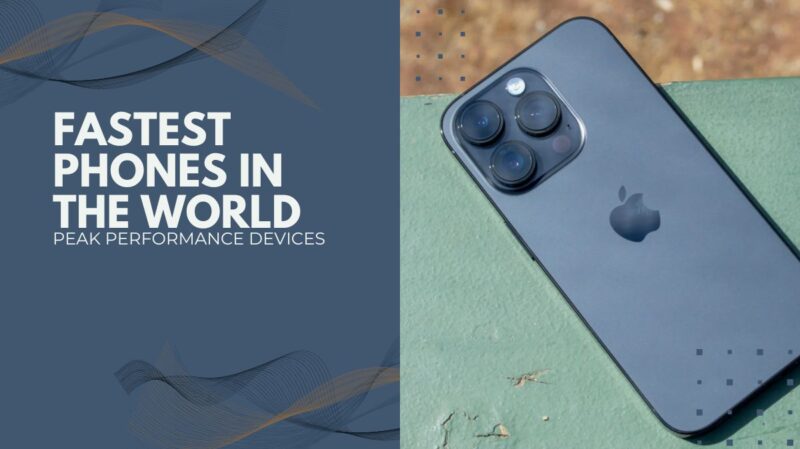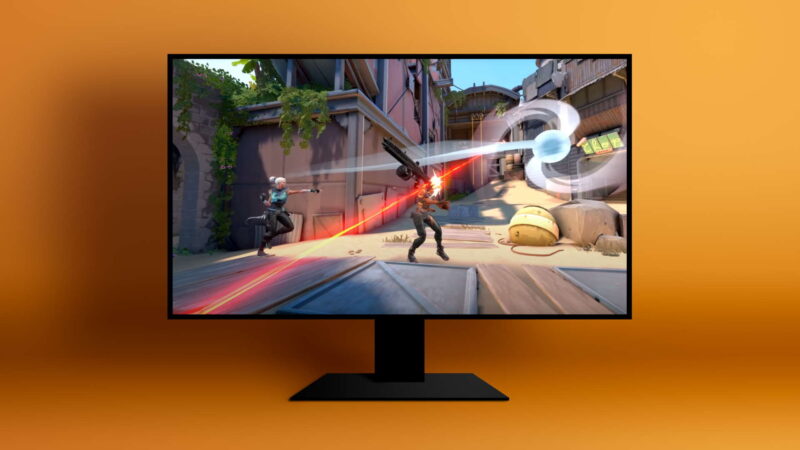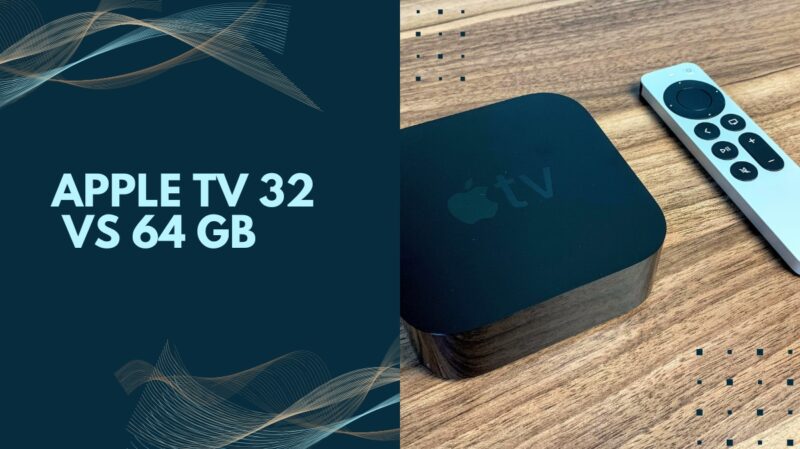It’s the year 2024, and it’s impossible to deny the intimate relationship between our lives and our smartphones. They have become our personal assistants, entertainment platforms, and our gateways to the world. Consequently, the desire for faster, more powerful, and more efficient smartphones has never been stronger.
This blog post is dedicated to satisfying that curiosity by shedding light on the 5 fastest phones in the world, the peak-performance devices that are redefining what mobile technology can achieve.
1. iPhone 14 Pro Max – The Powerhouse
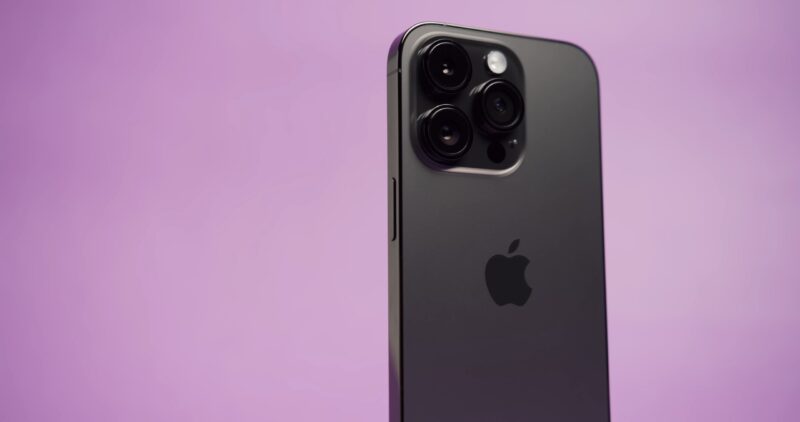
In the realm of smartphones, Apple’s iPhone is always a name that resonates with speed, power, and efficiency. With the iPhone 14 Pro Max, Apple has once again outdone itself. It’s not just a smartphone; it’s a superphone.
At the core of the iPhone 14 Pro Max is the A16 Bionic chip. This Silicon Valley marvel is a 5nm+ process technology chip with an 8-core CPU and 20-core GPU, offering 20% better performance and 30% more energy efficiency compared to its predecessor. Coupled with 8GB RAM, it ensures fluid multitasking and lag-free performance, be it editing 8K videos or playing graphic-intensive games.
The ProMotion technology with a 120Hz refresh rate on a stunning Super Retina XDR display ensures everything on this phone happens in the blink of an eye. Add to that the power of iOS 15 with enhanced optimization, and you have a phone that’s not just fast but smart.
2. Samsung Galaxy S24 Ultra – The Android Titan
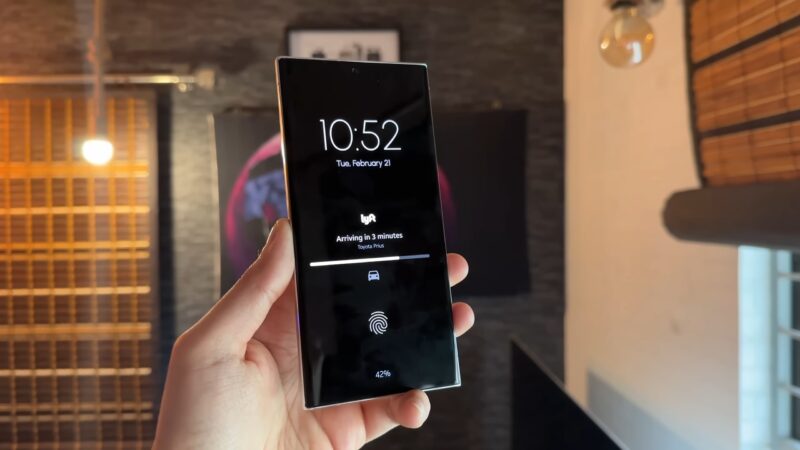
Samsung’s Galaxy series is synonymous with innovation. It’s latest offering, the Galaxy S24 Ultra, is a testament to that legacy. Powered by the Exynos 2200 SoC (System on a Chip) in the global version and Qualcomm’s Snapdragon 898 in the US version, this phone is an embodiment of raw power.
The Exynos 2200, designed with Samsung’s 4nm process technology, features an ARM-based AMD RDNA 2 GPU. This GPU, a first in any smartphone, brings desktop-class graphics to a handheld device, enabling superior gaming and multimedia performance.
The Snapdragon 898, on the other hand, uses advanced 5G technology and the 6th generation Qualcomm AI engine to deliver unrivaled speed and performance. With up to 16GB of RAM, the Galaxy S24 Ultra can handle everything you throw at it with ease. Its 120Hz Dynamic AMOLED 2X display ensures every interaction is as smooth as silk.
3. Xiaomi Mi 12 Ultra – The Speed Demon
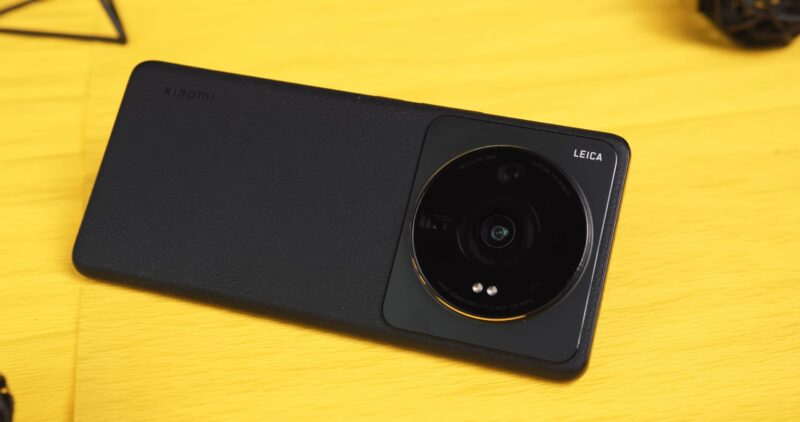
The Chinese tech giant Xiaomi has been steadily climbing the smartphone ladder with its high-performance, budget-friendly devices. The Mi 12 Ultra, their flagship phone, has made a significant splash in the global market.
Driving the Mi 12 Ultra is the Qualcomm Snapdragon 898, a powerhouse that delivers astounding performance. With a tri-cluster CPU structure and Adreno 730 GPU, it offers a fast, efficient, and seamless user experience. The smartphone boasts up to 16GB of LPDDR5 RAM, guaranteeing effortless multitasking.
The Mi 12 Ultra sports a 120Hz refresh rate on a 2K AMOLED display, resulting in crisp visuals and smooth transitions. The MIUI 13, based on Android 13, optimizes the hardware used to ensure peak performance, proving that Xiaomi is not just about affordability but also about unmatched speed.
4. Google Pixel 7 Pro – The Balanced Performer
![]()
The Pixel 7 Pro is Google’s masterpiece that perfectly balances performance and efficiency. It is powered by the custom-made Google Tensor SoC, which is optimized for Google’s machine-learning technologies. The result? A smartphone that not only excels in speed but also offers a fluid, AI-enhanced user experience.
The Tensor SoC, paired with 12GB of RAM, ensures that the Pixel 7 Pro delivers a smooth performance, irrespective of the task at hand. This powerhouse, combined with a 120Hz LTPO OLED display, guarantees a fast, responsive user interface.
The Pixel 7 Pro runs on the latest Android 13, offering an unadulterated and swift software experience, free from bloatware. It’s also the first to receive Android updates, meaning it’s always at the forefront of Google’s latest speed and efficiency enhancements.
5. OnePlus 10 Pro – The Speedster
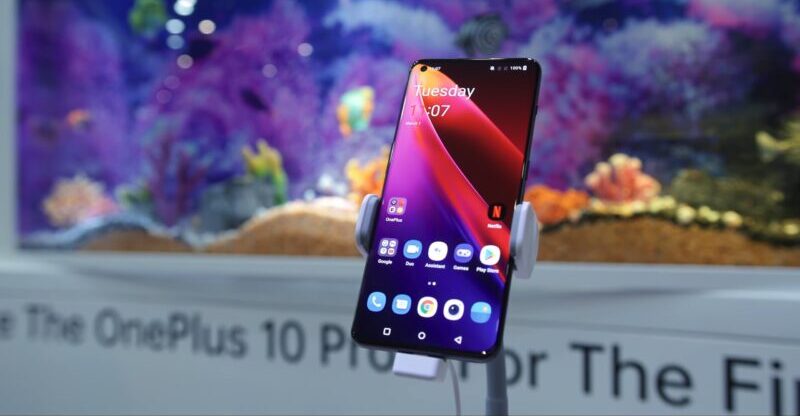
The OnePlus 10 Pro, aptly tagged the ‘Speedster,’ is a device designed with speed in mind. Powering the phone is the Snapdragon 898, Qualcomm’s fastest mobile processor. With an 8-core CPU and an Adreno 730 GPU, this smartphone delivers astounding performance.
The OnePlus 10 Pro comes with up to 12GB of LPDDR5 RAM, further boosting the device’s speed and efficiency. Its 120Hz Fluid AMOLED display with LTPO technology ensures a swift, buttery smooth visual experience, whether scrolling through social media or gaming.
Running on the OxygenOS 13 based on Android 13, the OnePlus 10 Pro offers a clean, bloat-free, and speedy user interface. It is optimized for efficient RAM and battery usage, ensuring that the phone’s high-speed performance doesn’t come at the expense of its battery life.
The Future of Smartphone Speed
In today’s age, speed is not just about the time it takes for an app to load or a file to transfer. It’s about the overall user experience – how fast and smooth the interface is, how quickly tasks can be performed, and how efficiently the software and hardware work together.
The aforementioned phones are not just the fastest in terms of raw horsepower. They represent a broader view of speed, one that includes performance, efficiency, and user experience. These phones are the vanguard of this new definition of speed, and they set the stage for what’s to come in the future of mobile technology.
As we move forward, expect to see more developments that push the boundaries of speed and performance. This could be in the form of more powerful processors, improved software optimization, and potentially even new technologies that redefine what it means to be a ‘fast’ phone.
The Role of Software Optimization
While the heart of a smartphone’s speed lies in its hardware, the soul is undoubtedly its software. The underlying software can either make or break the performance of a device, no matter how impressive its specs may be.
Every operating system undergoes regular updates to improve performance, fix bugs, and introduce new features. Each new iteration is a product of meticulous planning and optimization aimed at better hardware utilization. For instance, Android’s Project Mainline, introduced in Android 10 and refined in subsequent versions, allows Google to update critical parts of the Android OS in the background via the Google Play system updates. This ensures that even older devices can benefit from performance improvements and security patches without a full system update.
Similarly, Apple’s iOS 15 has introduced features like background App Refresh, where apps update content in the background during power-efficient times, like when the device is connected to Wi-Fi. This not only saves battery but also ensures that apps are ready with new content as soon as they’re opened, improving the speed of the user experience.
The 5G Factor: How Does it Influence Speed?
The fifth generation of cellular network technology, 5G, is another key player in the pursuit of speed. 5G promises significantly faster data speeds and lower latency than its predecessor, 4G. All the fastest phones in 2024 come equipped with 5G connectivity, indicating the close relationship between network speed and device performance.
Faster data speeds mean quicker downloads and uploads, smoother streaming, and an overall snappier internet experience. Lower latency can significantly enhance the user experience in real-time applications like online gaming and video conferencing.
The Future of Fast: What Lies Ahead?
As we look ahead, there are a few key trends to watch in the world of fast smartphones. One of these is the transition towards 3nm process technology in chip manufacturing. Both Apple and Samsung have hinted at using this technology in upcoming devices. A smaller process technology means more transistors in the same physical area, leading to better performance and energy efficiency.
Another exciting development is the rise of AI and machine learning in smartphones. Devices like Google’s Pixel 7 Pro, with its Google Tensor chip, are designed to optimize machine learning tasks. This trend is likely to continue, leading to smartphones that are not only faster but also smarter, capable of learning from user behavior to optimize performance.
Finally, we can’t ignore the potential impact of technologies like AR (Augmented Reality) and VR (Virtual Reality). As these technologies continue to mature, they will demand even faster and more powerful smartphones. This will undoubtedly drive further innovation in smartphone speed and performance.
Final Words
The world of smartphones is an ever-evolving landscape, with speed and performance at the forefront of its evolution. Whether you’re an Apple devotee, a Samsung fan, a Xiaomi follower, a Google enthusiast, or a OnePlus admirer, one thing’s for sure – you’ve got a lot to look forward to in the world of speedy, high-performance smartphones.
In a world that’s moving faster than ever, isn’t it only fair that our smartphones keep up? These five fastest phones in the world are doing just that and more. They’re not only keeping up with the world; they’re pushing it forward. And for us smartphone users, it’s a thrilling ride.

